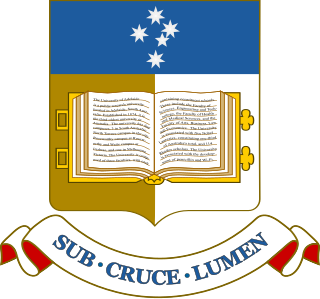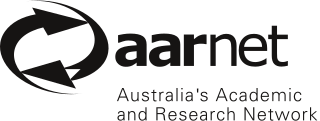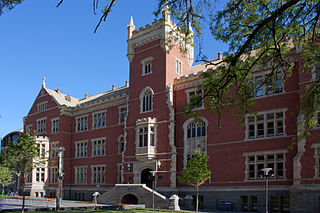Related Research Articles

Adelaide, is the capital city of South Australia, the state's largest city and the fifth-most populous city in Australia. "Adelaide" may refer to either Greater Adelaide or the Adelaide city centre. The demonym Adelaidean is used to denote the city and the residents of Adelaide. The Traditional Owners of the Adelaide region are the Kaurna people. The area of the city centre and surrounding parklands is called Tarndanya in the Kaurna language.

South Australia is a state in the southern central part of Australia. It covers some of the most arid parts of the country. With a total land area of 984,321 square kilometres (380,048 sq mi), it is the fourth-largest of Australia's states and territories by area, and second smallest state by population. It has a total of 1.8 million people. Its population is the second most highly centralised in Australia, after Western Australia, with more than 77 percent of South Australians living in the capital Adelaide, or its environs. Other population centres in the state are relatively small; Mount Gambier, the second-largest centre, has a population of 33,233.

Telecommunications in Australia refers to communication in Australia through electronic means, using devices such as telephone, television, radio or computer, and services such as the telephony and broadband networks. Telecommunications have always been important in Australia given the 'tyranny of distance' with a dispersed population. Governments have driven telecommunication development and have a key role in its regulation.

Flinders University is a public research university based in Adelaide, South Australia, with a footprint extending across 11 locations in South Australia and the Northern Territory. Founded in 1966, it was named in honour of British navigator Matthew Flinders, who explored and surveyed the Australian and South Australian coastline in the early 19th century.

The University of Adelaide is a public research university located in Adelaide, South Australia. Established in 1874, it is the third-oldest university in Australia. The university's main campus is located on North Terrace in the Adelaide city centre, adjacent to the Art Gallery of South Australia, the South Australian Museum, and the State Library of South Australia.

The University of South Australia (UniSA) is a public research university in the Australian state of South Australia. It is a founding member of the Australian Technology Network of universities, and is the largest university in South Australia with approximately 37,000 students.

Internet2 is a not-for-profit United States computer networking consortium led by members from the research and education communities, industry, and government. The Internet2 consortium administrative headquarters are located in Ann Arbor, Michigan, with offices in Washington, D.C. and Emeryville, California.

The City Loop is a mostly-underground and partly surface-level subway and rail system in the central business district (CBD) of Melbourne, Victoria, Australia.

AARNet provides Internet services to the Australian education and research communities and their research partners.

Internode Pty Ltd is an Australian Internet service provider (ISP) that provides NBN broadband services, business-class broadband access, web hosting, co-location, Voice over IP, and a variety of related services. Internode became part of TPG Telecom in July 2020.
Universities Australia is an organisation founded in Sydney in May 1920, which attempts to advance higher education through voluntary, cooperative and coordinated action. After being based for a time in both Sydney and Melbourne, its offices relocated to Canberra in 1966. It is a private company whose members are Australia's 39 universities. The universities are represented by their vice-chancellors.

The Flinders railway line is a suburban commuter line in Adelaide, South Australia, that branches off the Seaford line at Mitchell Park, and ends opposite Science Park, close to the Flinders University and the Flinders Medical Centre. The line is single track for most of its length, from Celtic Avenue, near Mitchell Park station, to its terminus.
The Corporation for Education Network Initiatives in California is a nonprofit corporation formed in 1997 to provide high-performance, high-bandwidth networking services to California universities and research institutions. Through this corporation, representatives from all of California's K-20 public education combine their networking resources toward the operation, deployment, and maintenance of the California Research and Education Network, or CalREN. Today, CalREN operates over 8,000 miles of fiber optic cable and serves more than 20 million users.

Flinders Medical Centre (FMC) is a major public tertiary hospital and teaching school, co-located with Flinders University and the 130 bed Flinders Private Hospital located at Bedford Park, South Australia. It opened in 1976. It serves as the trauma centre for the southern suburbs, and parts of the Adelaide Hills. An around-the-clock emergency retrieval service brings patients to FMC by road or helicopter.
The Systemic Infrastructure Initiative was announced by the Government of Australia in January 2001 as part of Backing Australia's Ability – An Innovation Action Plan for the Future.
Internet in Australia first became available on a permanent basis to universities in Australia in May 1989, via AARNet. Pegasus Networks was Australia's first public Internet provider in June 1989. The first commercial dial-up Internet Service Provider (ISP) appeared in capital cities soon after, and by the mid-1990s almost the entire country had a range of choices of dial-up ISPs. Today, Internet access is available through a range of technologies, i.e. hybrid fibre coaxial cable, digital subscriber line (DSL), Integrated Services Digital Network (ISDN) and satellite Internet. In July 2009, the federal government, in partnership with the industrial sector, began rolling out a nationwide fibre-to-the-premises (FTTP) and improved fixed wireless and satellite access through the National Broadband Network. Subsequently, the roll out was downgraded to a Multi-Technology Mix on the promise of it being less expensive and with earlier completion. In October 2020, the federal government announced an upgrade by 2023 of NBN fibre-to-the-node (FTTN) services to FTTP for 2 million households, at a cost of A$3.5 billion.
The Institute for a Broadband-Enabled Society (IBES) is an Australian research institute focusing on the development of broadband-enabled applications and technologies. The institute is based in the Department of Electrical and Electronic Engineering at The University of Melbourne in Victoria (Australia). Research in the centre is clustered around five research themes:

Education in South Australia is primarily the responsibility of the South Australian Government.
Professor Nils Göran Arne Roos FTSE is a Swedish academic, technologist, author and businessman. He is a specialist in the field of intellectual capital and an expert in innovation management and strategy. He was appointed Thinker in Residence on industry development by the Government of South Australia in 2011, and subsequently moved to the state's Economic Development Board where he serves as a member. Amongst a number of other positions, he is also a member of the Flinders University Council. Roos was named one of the 13 most influential thinkers for the 21st century by the Spanish business journal Direccion y Progreso.
References
- ↑ "Flinders University - Adelaide, South Australia". Flinders University. Retrieved 17 January 2023.
- ↑ "SABRENet to accelerate e-research in SA". www.adelaide.edu.au. Retrieved 17 January 2023.